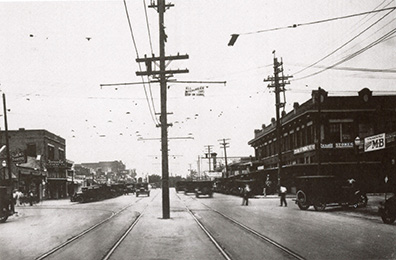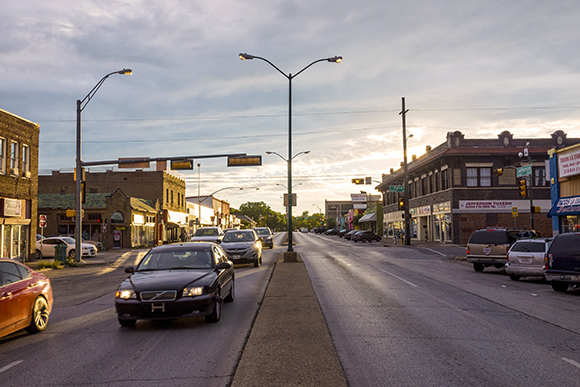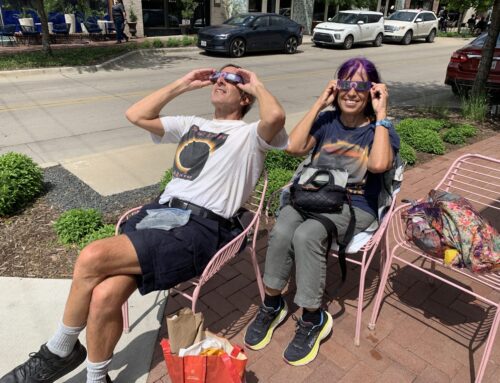
Top: The intersection of Jefferson Boulevard at Tyler Street in 1929. (Photo courtesy of the Texas/Dallas History and Archives Division of the Dallas Public Library)
The Bishop Arts District Conservation District protects old buildings in those few blocks from demolition, but Jefferson Boulevard enjoys no such sweeping protection.
When the boulevard was rezoned in 2014, it allowed buildings that mix apartments, offices and shops as high as 15 stories. If a developer should buy up a few buildings in a row on Jefferson, regardless of the structures’ age or importance, they could tear them down and build high-rise apartments with retail at street level, for example.
On the whole boulevard, only three historic buildings are protected from demolition by city ordinance. Sunset High School and the Oak Cliff Methodist Church at Marsalis are two of them.
The other is a one-story building on the southwest corner of Jefferson and Tyler, which now houses a quinceañera shop.
This was Mallory Drug Store, built in 1912.
For several years during the streetcar era, Mallory was the vortex of our neighborhood. It was built on one of the city’s busiest streetcar lines, and it was a transfer point for the Interurban line that ran to Fort Worth.
It later became a Clarence Saunders grocery store, one of several in our neighborhood at the time.
The building became a Dallas historic landmark in the 1970s, when it housed B&B Bicycles, because it was a prime architectural example of retail built specifically to serve a streetcar.
But there’s an argument to be made for preserving the entire corner of Jefferson at Tyler.

The intersection today, photo by Danny Fulgencio
Oak Cliff’s original downtown, which included a city hall, fire station, movie theater, homes and retail buildings is all but gone. Most of it was torn down in the mid 1950s to make way for Interstate 35.
Jefferson at Tyler, however, is one of very few intersections to retain its original character, nearly unblemished.
Across the street from Mallory, at 901 W. Jefferson, is a two-story building that also was built as a pharmacy. It changed hands several times, but it was a Rexall in a 1929 photo. These were the days when a drugstore was more than a pharmacy; it was a place to get lunch, send mail and obtain certain government services, including vehicle registration.
The second story of the old Rexall building more recently has been converted to artists’ lofts and an apartment. The building is owned by an Oak Cliff resident with an interest in preservation. And the Mallory building is owner occupied. The opposite corner belongs to the wedding and quinceañera shop Lizcano, which also is owner occupied.
But the building that now houses Tienda Choris, at 835 W. Jefferson on the northeast corner, is owned by a local family company that holds a lot of coin laundries, check-cashing places and convenience stores. The 102-year-old retail strip is fully occupied with a tattoo shop, a couple of restaurants and a small grocery. But the current zoning would allow an apartment building as high as 15 stories there.
The new Oak Cliff streetcar rolled into Bishop Arts at the end of August, and there are many who are rallying for it to be further extended to Jefferson, just like the old days.
By the time it gets there, years in the future, an unprotected Jefferson Boulevard could look very different than it does today.





